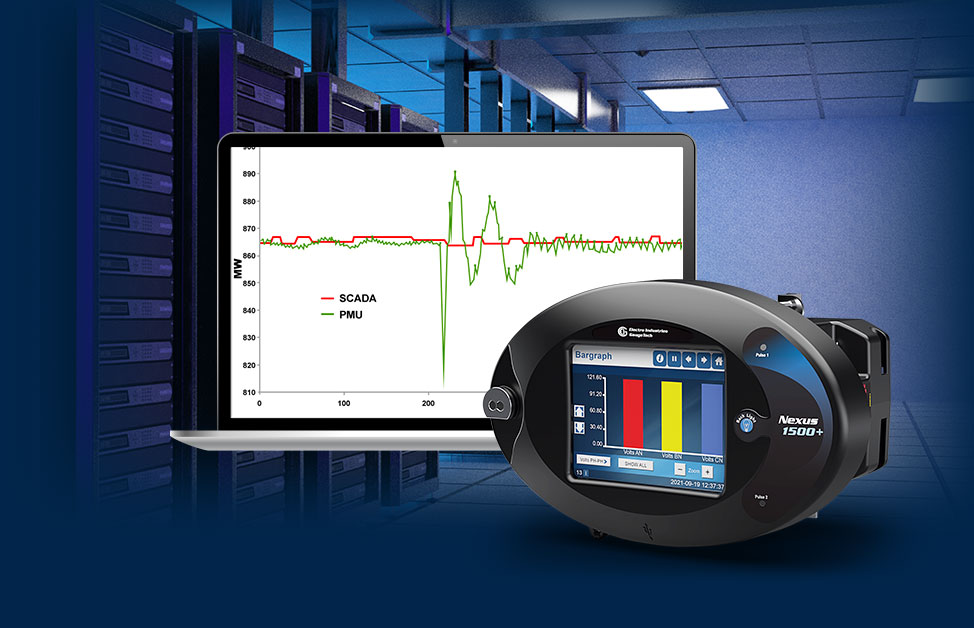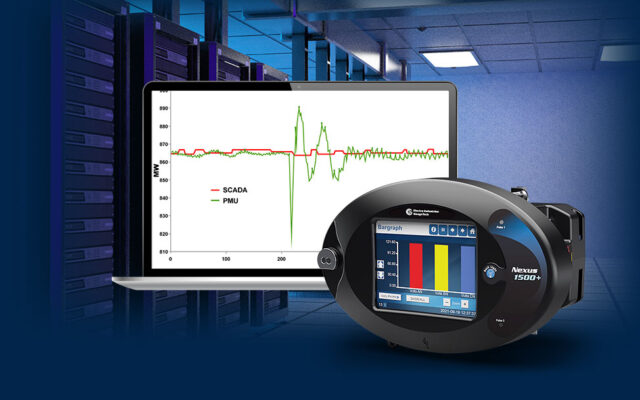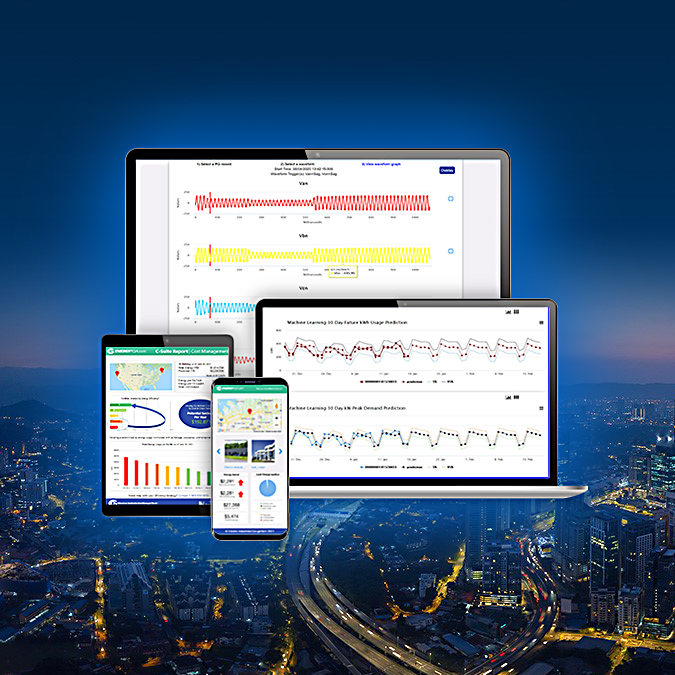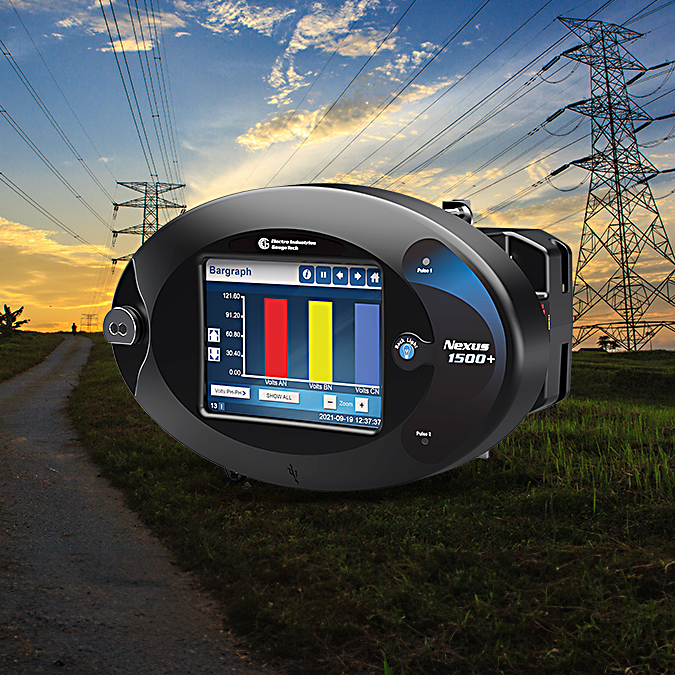Synchrophasor systems are used by utilities to improve power system stability by providing operators with a wide-area awareness of grid conditions. Synchrophasors are time synchronized estimated measurements of magnitude and phase angle of voltage and current and related measurements, such as frequency, taken from different areas of the grid. Phasor Measurement Units (PMUs) record the measured data and transmit it to a phase data concentrator (PDC) which aggregates and time-aligns the data for both real time and post-event analysis. Synchrophasors allow for immediate actions to be taken to prevent power outages, as well as the detection of unstable conditions such as voltage variability, power oscillations, and islanding. The ability to monitor reactive margin, determine dynamic line impedance, and distributed state measurement makes PMUs an essential tool for grid resiliency and reliability.
Power Quality Meters – NEXUS® 1500+ METER PMU IMPLEMENTATION
The PMU provides the following Synchronized Measurements:
- Individual voltage/current phasors (VA, VB, VD, IA, IB, IC)
- Symmetrical components phasors (V0, V1, V2, I0, I1, I2)
- Frequency and Rate of Change of Frequency (ROCOF)
- Built-in digital inputs
- Analog
- Fundamental power: (watt total and per phase, VA total and per phase, VAR total and per phase)
- Displacement power factor: (total and per phase)
Supports P (Fast Response) or M (Precise Measurement) Classes, User Selectable
Data frame rates for 50 Hz:
- 10/25/50 frames per second; for 60 Hz: 10/12/15/20/30/60 frames per second
Data format:
- Configurable float or integer, polar or rectangular
Time sync standard:
- IRIG-B or IEEE 1588 PTPv2
Number of sessions:
- Up to 2 simultaneous clients
Supports Ethernet or Fiber over Ethernet:
- TCP communication for header, configuration, and command;
- UDP communication for data, including unicast, broadcast, and multicast.
Phasor Measurement Unit (PMU) APPLICATIONS
Transmission / Sub-Transmission
- Voltage stability assessment
- Improve grid resiliency and reliability
- Determine instability through ROCOF and voltage stability monitoring
- Monitor reactive margin, phase angle and power oscillation
- Determine dynamic line impedance

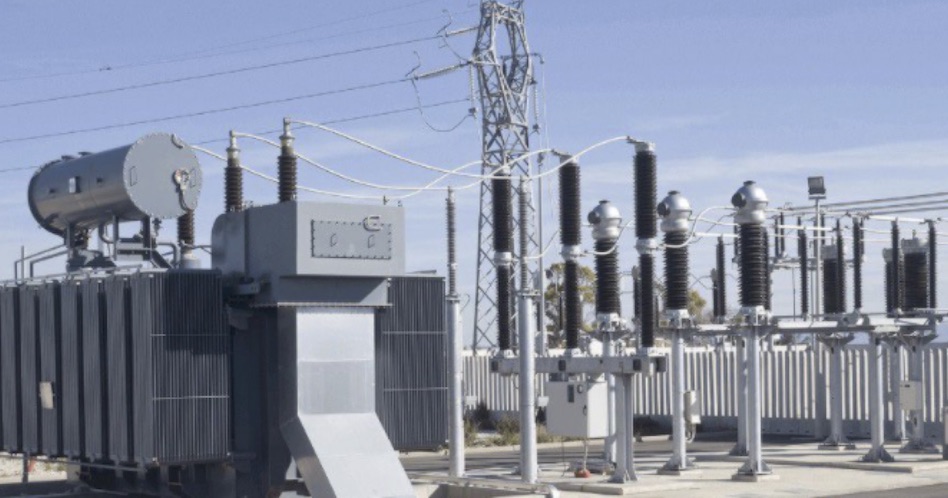
Distribution System Applications
- Distribution state measurement
- Enable proactive island detection to prevent outages and ensure reliable power to customers
- Apparatus monitoring
- Smart inverter control
- Volt-VAR optimization
- Broken wire detection
Power Generation: Traditional and Alternative
- Provide real time frequency, detection of oscillation and low damping conditions
- Facilitate post event analysis through correlating status and analogs
- Provide data for power system modeling and validation studies


Distributed Energy Resource Monitoring
- DER monitoring
- DER system angular difference to facilitate long distance check sync
- Rapid islanding detection for remedial actions
Phasor Measurement Unit (PMU) Benefits
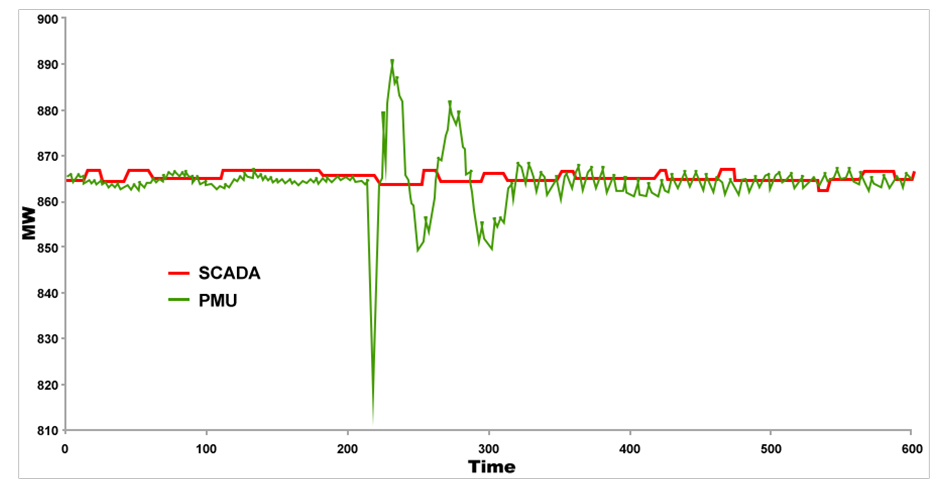
- Provides wide-area situational awareness for system operators with improved visibility into dynamic grid conditions.
- Determine stress points of the electric power system.
- Detect and aid in restoring an islanded section of the grid after a storm or major outage disturbance.
- Instantaneous measurements provide early warning detection alerts that SCADA systems miss.
- Built in system wide PMU analysis for future implementation of big data analytics, artificial intelligence and machine learning to proactively improve power systems and prevent outages.
Real World Example:
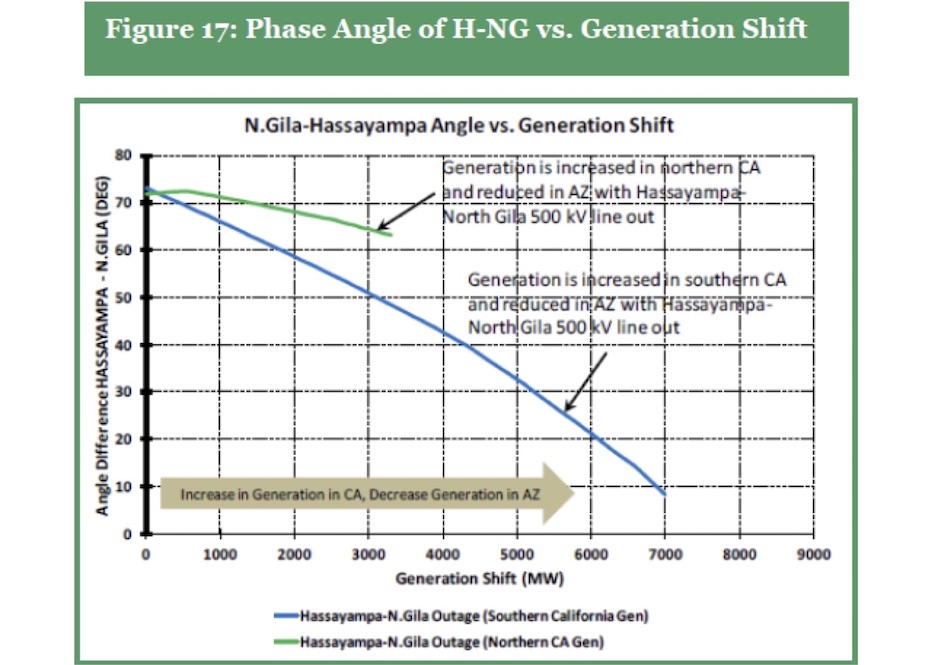
Result of Undetected Phase Angle Divergence in September 2011 Southwest US Outage
- 11-minute cascading outage in Pacific Southwest.
- Initiated when a single 500 kV line tripped.
- Power was redistributed, increasing flow, dropping voltages, and overloading equipment.
- Led to tripping lines, generators, etc.
Products
https://www.electroind.com/nexus-1500p-advanced-programming-webinar/
https://www.electroind.com/eig-releases-color-touchscreen-external-display-for-nexus-1450-meter/
https://www.wfmz.com/news/pr_newswire/pr_newswire_technology/eig-releases-energypqa-com-tm-cloud-based-energy-management-solution/article_1b9444d9-2379-5c37-8e3d-cfd0c734fc89.html
https://www.youtube.com/watch?v=biecA80Jwj4
https://www.utilityproducts.com/test-measurement/article/14178057/eig-releases-energypqacom-cloud-based-energy-management-solution
What is a Phasor Measurement Unit (PMU)?
A PMU is part of a synchrophasor system used by utilities for grid stability and wide-area situational awareness. A PMU takes time-synchronized measurements of estimated voltage and current phasors and phase angles, as well as related measurments.
Why do you need Synchrophasor measurements?
Synchrophasor measurements let grid operators know the condition of the grid. They can help to prevent power outages, prevent islanding, and uncover voltage unreliability.
What is the difference between SCADA and PMU?
While SCADA (Supervisory Control and Data Acquisition) systems focus on controlling and monitoring processes, PMUs (Phasor Measurement Units) provide real-time synchrophasor measurements of voltage, current, and frequency at specific locations on the grid. PMUs enable wide-area situational awareness, allowing for early warning detection alerts and facilitating quick decisions to prevent power outages. SCADA systems, on the other hand, do not provide instantaneous measurements and are more geared towards controlling and regulating the system. In short, while SCADA focuses on process control, PMUs provide real-time synchrophasor measurements.
What is PMU concept of synchrophasor?
PMU, or Phasor Measurement Unit, is a device that measures synchrophasors- the magnitude and phase angle of voltage and current- and related data from specific locations on the electrical grid, which are synchronized to a common time source. Synchrophasors provide instantaneous data about voltage, current, and frequency at specific locations, enabling immediate actions to prevent power outages, improve grid resiliency and reliability, monitor reactive margin, phase angle, and power oscillation, among others. Overall, PMU’s synchrophasor measurements provide wide-area situational awareness for system operators, determining stress points and detecting and aiding in restoring the grid after outages or disturbances.
What is the difference between a phasor and a synchrophasor?
A phasor is a vector representing the magnitude and phase angle of an alternating current or voltage, while synchrophasors provide instant synchronized measurements of voltage, current, and frequency at specific points on the electrical grid. Unlike phasors, synchrophasors are timed to a common source and are taken from many areas on the grid. They enable real-time decision-making to prevent power outages, improve grid resiliency and reliability, and aid in detecting and restoring grid sections after outages. With their ability to monitor power oscillation, reactive margin, and line impedance, synchrophasors provide wide-area situational awareness for system operators and are invaluable in modern power grid management.
How does the PMU work?
The Phasor Measurement Unit (PMU) measures the phasor and related data from a specific location on the grid. These measurement, synchronized to a common time source, are called synchrophasors. Synchrophasors provide instantaneous voltage, current, and frequency data which allows for quick decision-making to prevent power outages. PMUs have many applications, such as voltage stability assessment, improving grid resiliency and reliability, distribution state measurement, and providing real-time frequency data for power generation. By detecting stress points in the electric power system, PMUs aid in early warning detection, restoration, and prevention of power outages.




